Both the SkyBell HD and Ring 2 are excellent smart doorbells, but there are some key differences that make each better suited for different types of homeowners.
The SkyBell HD has a cutting-edge camera, and the Ring 2 operates within a security ecosystem and offers greater flexibility. As each person has their own priorities when buying a video doorbell, the decision isn’t exactly cut and dry.
Let’s dive into the differences by comparing the SkyBell HD vs. Ring 2 to help you determine which device is right for you.
About SkyBell and Ring
SkyBell and Ring are both product families that provide a homeowner with smart doorbells that are both convenient and secure.
The Ring product line includes a number of smart doorbells as well as a security camera and security system, allowing for more comprehensive coverage of all of your home-monitoring needs.
SkyBell has fewer products, but their smart doorbells remain some of the best on the market. The doorbells also have wide support for a number of smart home systems, allowing you to add them seamlessly to your existing setup. If you’re looking for a fully-featured device that checks all the boxes, SkyBell may very well be up your alley.
SkyBell HD vs. Ring 2 — Things in Common
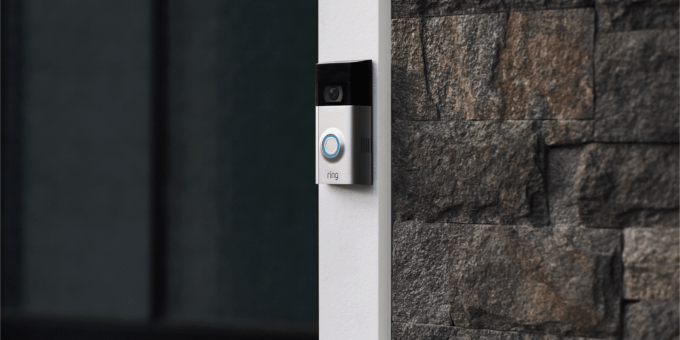
While there are a number of differences that set these doorbells apart from one another, they actually have a lot in common as well – making it clear that both devices have something excellent to offer.
Video resolution is an important part of keeping tabs on your home, and both the SkyBell HD and Ring 2 record in 1080p HD. Night view also allows you to monitor your front door regardless of the lightning conditions, and motion-triggered or on-demand live-view keep you in the loop and aware of any suspicious activity.
Rounding out the detection features are support for motion detection and two-way-audio, making either device a top pick when shopping for a smart doorbell.
SkyBell HD vs. Ring 2 — Differences
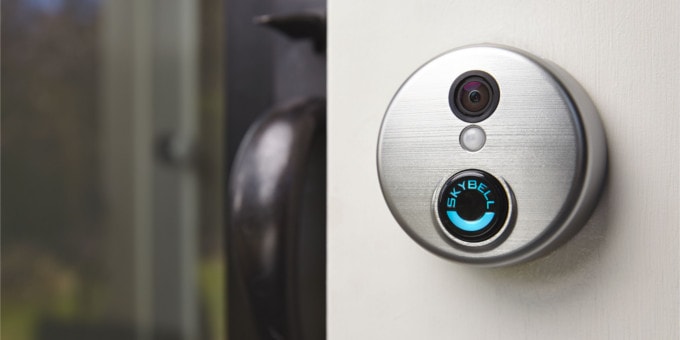
-
Difference #1: FPS – As mentioned above, both the SkyBell HD and Ring 2 support 1080p HD video recording, but they do differ in their FPS, or Frames per Second.
FPS is essentially a marker that describes the speed at which a camera can capture video, and the higher the number the better.
The SkyBell HD can record at 30 FPS, while the Ring 2 only supports 15 FPS recordings. This can make a significant difference in the quality of your recordings, and it’s possible that a low FPS can make it difficult to monitor the identity of a person moving quickly in front of the camera.
-
Difference #2: Power Options – Power options can make the difference between a complicated install process and one that is flexible and adaptable. The SkyBell HD only supports hardwired connections, which means you’ll need to hook it up to your existing doorbell system. While this is more of an involved process, it also ensures that your doorbell won’t run out of battery.
The Ring 2 also supports a hardwired connection, but also offers homeowners the ability to use a battery to power the device. This allows for much more flexibility as to where you can place the bell, at the expense of a less reliable power source. The battery does last up to 6 months, but you’ll need to be sure to swap the power supply out if you’d like to keep uninterrupted monitoring of your home.
Each doorbell has different requirements for power when hardwiring, with the SkyBell HD supporting 10-36 VAC, 10VA or 12 VDC transformers, and the Ring 2 a bit more limited with support for just 16-24 VAC.
-
Difference #3: Field of View – The SkyBell HD doorbell has a 180° field of view while the Ring 2 has a more constricted coverage at 160°. In most scenarios, either doorbell will serve you just fine, but the SkyBell HD does have the advantage in this category due to the wider picture. When trying to keep tabs on the entrance of your home, having access to a more robust field of view may make all the difference.
-
Difference #4: Color Night Vision – As mentioned above, both the SkyBell HD and Ring 2 support night vision. The SkyBell HD does have an edge, however, in that it supports color night vision. This may give more peace of mind as the fidelity of the recorded image won’t change when the sun goes down.
-
Difference #5: Custom Motion Zones – One area in which the Ring 2 does have an advantage of the SkyBell HD is the support for custom motion zones. By focusing the doorbell’s camera on specific areas that you are interested in monitoring, you may be able to increase the security of your home while lessening any sort of false alarms.
The SkyBell HD does not offer support for these motion zones.
-
Difference #6: Silent Mode – When you wire your Ring 2 to your doorbell, you’ll unfortunately be unable to adjust the pre-existing door chime. The SkyBell HD addresses this issue with the inclusion of a silent mode, allowing you to bypass an annoying chime and further customize the way your doorbell functions.
While the Ring 2 does not offer a silent mode with your pre-existing chime, you can add in the Ring Chime or Ring Chime Pro, which acts as a custom chime and offers the “Chime Snooze” feature.
With the Ring Chime you can silence the speaker for a pre-set length of time. And the Pro version of the chime also serves as a WiFi extender strengthening the WiFi signal to your Ring doorbell.
Check out our take on Ring Chime vs. Chime Pro for more information.
-
Difference #7: Operating Temperature – For the majority of climates, either doorbell will work flawlessly. However, in colder conditions the SkyBell HD may be the better choice – functioning between -40 and 140 degrees fahrenheit.
The Ring 2 has a more limited range of operation, working when subjected to temperatures between -4 and 120 degrees fahrenheit.
-
Difference #8: Web App – The SkyBell HD and the Ring 2 each have support for apps that will allow you to control your camera and access options like two-way-audio and motion alerts. The main difference between these two smart doorbells, however, is that the Ring 2 also has support for a web application.
With the SkyBell, you’ll need to have your phone or tablet on hand in order to control your doorbell. The Ring 2 edges out the competition with more flexibility when it comes time to monitor your home.
-
Difference #9: Subscriptions – The ability to store video footage is very useful – especially if you’re often away from your home.
The SkyBell HD offers free 7-day video storage, which will allow you to look back on recent footage without any additional fees.
The Ring 2 requires a subscription plan for cloud storage, but has a wider variety of options that are a little bit more comprehensive than the SkyBell.
There are two main subscription plans with the Ring 2: Protect Basic and Protect Plus.
Protect Basic costs $3/month or $30/per year, and includes 60-day video storage, the ability to watch video recorded from alerts at any point, and the ability to share video with friends, family, or law enforcement professionals.
Protect Plus is more advanced and more expensive at $10/month or $100/year. In addition to the perks from Protect Basic, the plan offers support for an unlimited amount of Ring cameras, 10% discounts on future purchases, an extended warranty, and 24/7 professional monitoring (with an Alarm Security Kit).
Long story short, if you just want basic coverage and don’t want to pay the extra fee, the SkyBell HD may be the best option. For more comprehensive coverage with a small monthly expense, however, the Ring 2 is definitely more fully-featured.
-
Difference #10: Finish – Both the SkyBell HD and Ring 2 offer multiple different finishes. With the first, you’ll be able to choose from Brushed Aluminum or Oil Rubbed bronze, while the Ring 2 comes with two templates by default.
The Ring 2 has the advantage if you’d like to be able to swap your finish out at will, as they are easily replaceable. You’ll also receive two color options by default that so you can pick and choose to suit your needs.
The SkyBell HD has beautiful finishes, but you’re largely stuck with the finish you choose.
The best doorbell in this category will depend on how you feel about the different color options, but if you’re unsure of whether your tastes will change, the Ring 2 could be the better and more flexible option.
SkyBell HD vs. Ring 2 — Comparison Chart
| Skybell HD | Ring 2 | |
|---|---|---|
| Video Resolution | 1080p/720p HD | 1080p HD |
| FPS | 30 | 15 |
| Power Options | Hardwired only | Battery/Hardwired |
| Battery Life | N/A | ~6 months |
| Compatible Doorbell Transformers | 10-36 VAC, 10VA or 12 VDC | 16-24 VAC, DC not compatible |
| Field of View | 180° | 160° |
| Night view | Yes | Yes |
| Color Night Vision | Yes | Black & White |
| Compatible Networks | 2.4 GHz 802.11 b/g/n | 2.4 GHz 802.11 b/g/n |
| Motion Detection | Yes | Yes |
| Custom Motion Zones | No | Yes |
| Live View Motion Triggered | Yes | Yes |
| Live View On Demand | Yes | Only if Wired |
| Size | 2.8 x 2.8 x 0.9 inches 7.1 x 7.1 x 2.2 cm |
5.05 x 2.50 x 1.08 inches 12.83 x 6.35 x 2.74 cm |
| Silent Mode | Yes | No |
| Two-Way Audio | Yes | Yes |
| Operating Temperature | -40 – 140°F (-20 – 50°C) | -5 – 120°F (-40 – 60°C) |
| Web App | No | Yes |
| Subscriptions | No | Yes |
| Free Video Storage | 7 days | No |
| Finish | Brushed Aluminum or Oil Rubbed Bronze | Already comes with 2 faceplates |
SkyBell HD and Ring 2’s Accessories
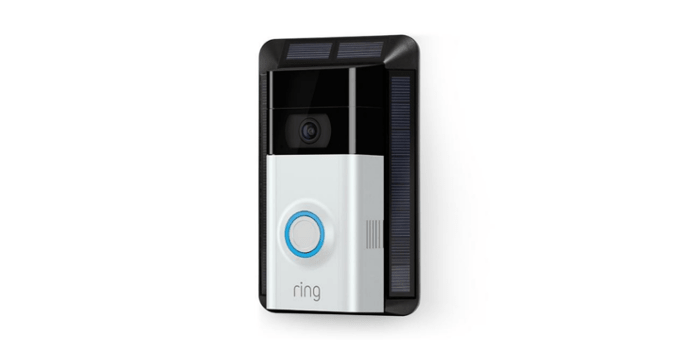
While the SkyBell HD and Ring 2 function well as is, there are also several different accessories you can purchase that add either more flexibility or more features to your smart doorbell.
The SkyBell HD supports an optional wall or wedge mount – both of which offer more flexibility when it comes to installing the device. There’s also a dedicated hardware kit that includes all the tools you’ll need to get started, as well as a digital adapter to ensure your doorbell works flawlessly with your home pre-existing chime.
No products found.
The accessories available for the Ring 2 include various battery options if you’d prefer not to hardwire the device, and an optional solar charger allows you to stretch out the battery life of your doorbell. There are also the Ring Chime discussed above that allow you to add customizable chimes, and various different mounts that are analogous to those available for the SkyBell HD. You can also purchase new templates if you’d like to change up the aesthetic of the doorbell in the future.
SkyBell HD vs. Ring 2 — Our Thoughts
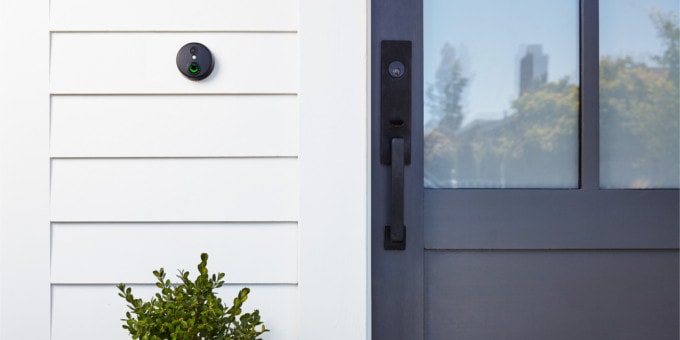
At the end of the day, it’s difficult to declare a clear winner when deciding between the SkyBell HD and Ring 2. Each device has its pros and cons, and which one is right for you will depend on personal preference.
With that said, we feel that the SkyBell HD has better capabilities for the camera itself. The colored night vision, wider field of view, silent mode, and higher FPS make it a more capable device when it comes to pure recording.
The Ring 2 also has a number of advantages, however, with a more comprehensive storage plan and support for 24/7 monitoring (with an Alarm Security Kit). The faceplates are also interchangeable, the custom motion zones allow you to record what matters, and the web app offers more flexibility for controlling the bell. Additionally, the Ring product family is more robust and the doorbell will integrate flawlessly with devices like the Ring security system and cameras.
So, if you’re looking for a cutting-edge camera with all the bells and whistles, the SkyBell HD is your best bet. For more storage, flexibility, and integration with a wider security ecosystem, the Ring 2 comes out on top.
Last update on 2024-04-26 at 19:16 / Affiliate links / Images from Amazon Product Advertising API
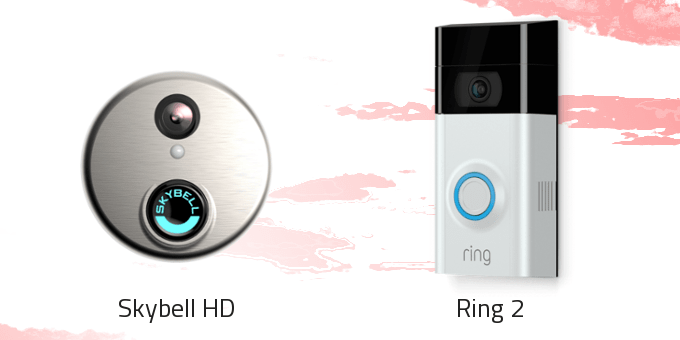






SkyBell response to the Classic Version 2.0 model no longer working.
Unfortunately, we have stopped supporting this model with firmware and app updates for approx 3 years at this point. We have not pulled service for this device yet SkyBell Classic can grow unstable over time as iOS and Android update.
We did send out a notice in 2016 offering the option for an upgrade (notifying our customers with active SkyBell Classic accounts) that these changes would be coming in 2017. At this time, the upgrade promotion has ended as this product has not been produced or distributed in over 3 years.